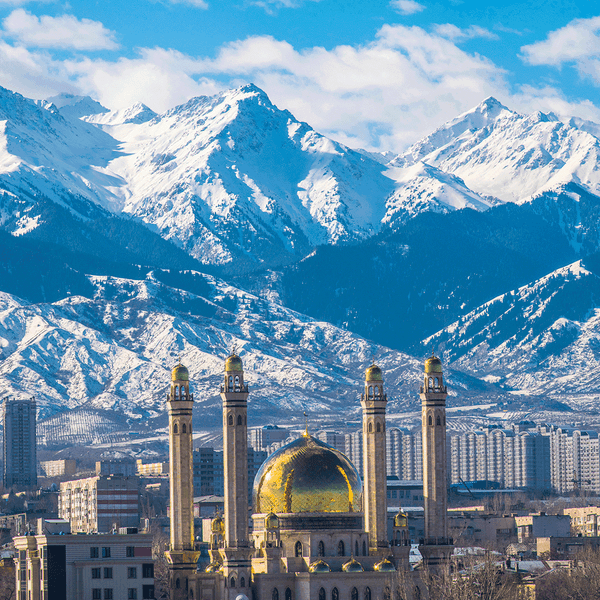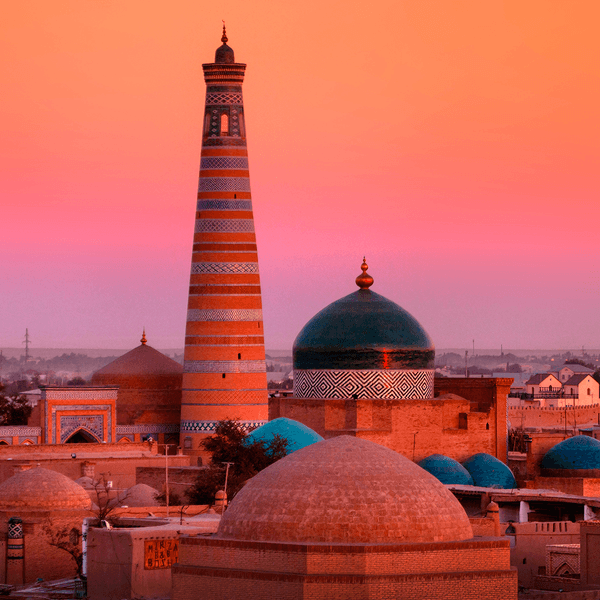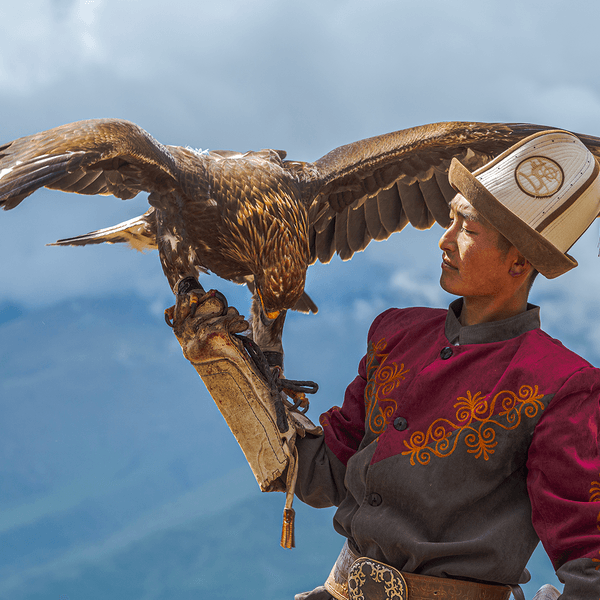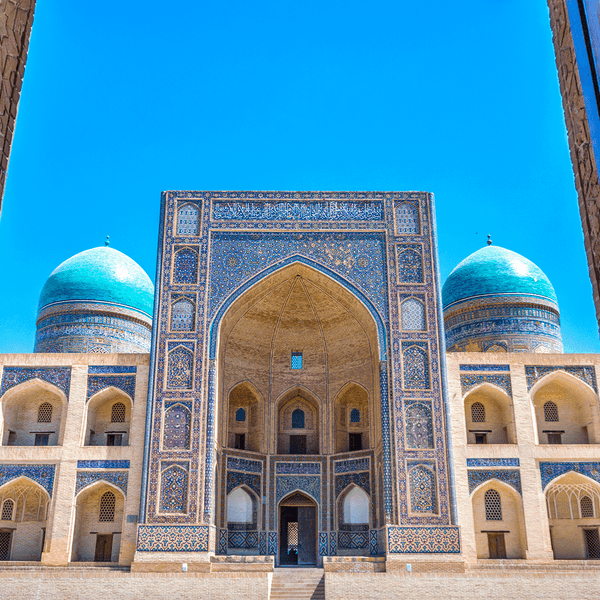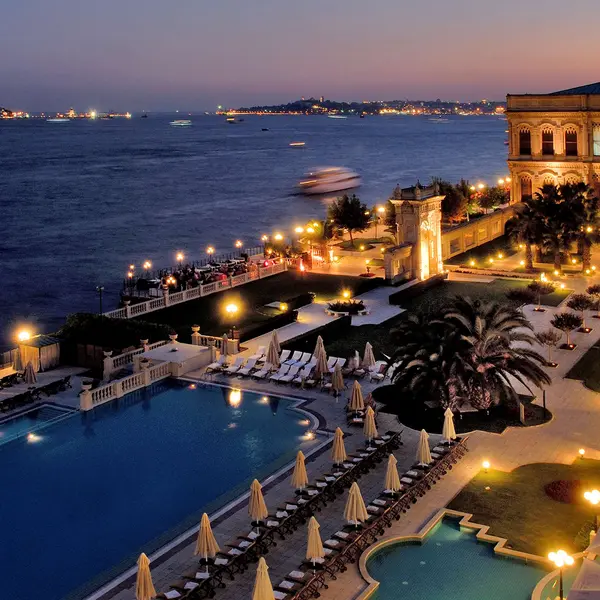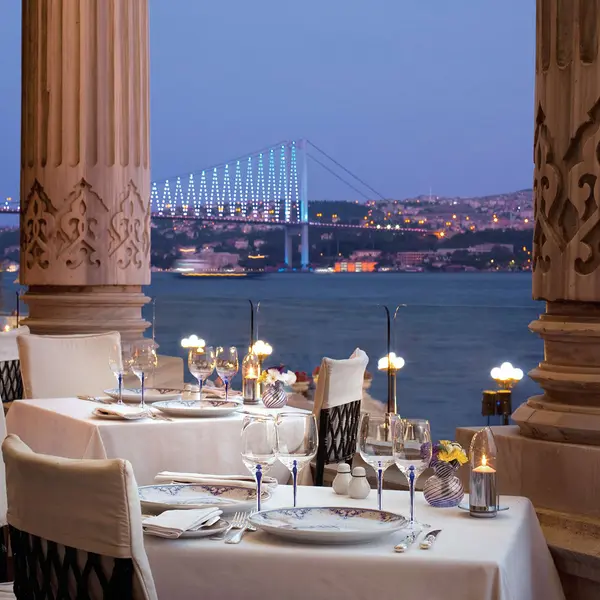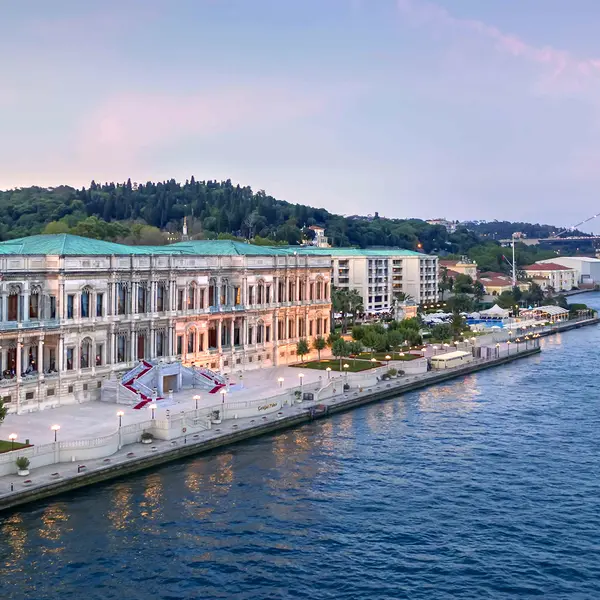
At once secluded and sprawling, Central Asia’s rugged peaks, sweeping sands and age-old cities come together on the Silk Road. Its interconnected trade routes open a window to a world apart. While navigating such exotic landscapes may seem daunting, the Golden Eagle Luxury Train makes it doable.
Lesser known than the alpine railways of Switzerland, Sri Lanka’s tea country train or South Africa’s Rovos Rail safari, this Orient-bound marvel boasts a portal to both the Golden Era of rail travel and the days of China’s Han Dynasty. Settle into a stylishly modern suite (complete with an ensuite), unpack only once and watch the scenery roll by at an unhurried pace that allows ample time to appreciate all the far-flung sights to come.
What is the Silk Road?
Named for the fine textiles transported along its routes from China to Europe, the Silk Road was once a lifeline for traders of precious stones, coveted teas and aromatic spices, horses, glassware and more. For almost 1,600 years, it connected the East and West, bearing witness to such famed travellers as Marco Polo.
Where is the Silk Road?
Rather than a singular road, the interweaving paths that comprise the ‘Silk Road’ are in fact a network of well-trod trade routes spanning more than 6,400 kilometres between Xi’an, China and Venice, Italy – almost as long as the Nile River.
Traversing the harsh Gobi Desert, the rugged Pamir Mountains of Tajikistan and the vast Caspian Sea, they once formed the backbone of a wider network of trade routes reaching as far as Japan, Chennai (then Madras) in India’s south and the coastal cities of East Africa. It’s an epic road trip the likes of which few today have witnessed.
How to Travel the Silk Road?
Swap the camel caravans of Marco Polo’s adventures for a more luxurious method of exploration: aboard a private train. A journey on the Golden Eagle harks back to the resplendence of another era but with all the modern comforts of the 21st century. All of the richly appointed cabins have ensuites with underfloor heating; the bar lounge car is your setting for mingling with fellow guests over cards and aperitifs; the restaurant car serves everything from a bountiful breakfast buffet to dinner menus inspired by the landscapes outside. And when you’re not onboard the train, you’ll be exploring the best of the Silk Road with thoughtfully curated excursions, like learning about the traditional practice of eagle hunting.
Why You Need to Explore the Silk Road
1. You’ll learn about cultures ancient and alive

One of Central Asia’s best-kept secrets is its abundance of thriving cultures, many of which have existed for millennia. From the sloping fortifications of the 5th-century Ark of Bukhara – a city itself some 2,500 years old – to the tilework of the Shah-i-Zinda necropolis in Samarkand, the markers of cultural heritage along the Silk Road defy simple description.
Visit the nomadic Kyrgyz people among the yurts, horses and eagle hunters for which they are renowned. Step inside Margilan’s silk factories where hand-woven ikat fabrics unspool before you. Watch Rishtan’s local artisans at work as ornamental glazed ceramics take shape.
2. You’ll encounter priceless treasures
The Silk Road is home to some of the most coveted artefacts in world history. 4,000-year-old petroglyphs tell age-old stories at Kyrgyzstan’s Lake Issyk Kul, predating even the nomadic Kyrgyz peoples. In the Old City of Tashkent, the Tillya Sheikh Mosque hosts one of the oldest copies of the Quran in existence.
Fresh and flashy, Ashgabat’s dizzying array of record-breaking structures mimic a Chicago World’s Fair-style construction – a fitting comparison for a capital known as the ‘White Marble City’.
3. You’ll see breathtakingly diverse landscapes

Covering such a vast expanse, the Silk Road boasts landscapes more varied than you may expect. In Tajikistan, the Pamir Mountains comprise some of the world’s tallest peaks. Further north, verdant slopes mirrored in the tranquil waters of the Kolsai suggest you’ve stepped through a portal to the Swiss Alps. Throughout the shifting sands of Mongolia’s Gobi Desert, the Gobi bear, marbled polecat and black-tailed gazelle bravely find their way into barren lands.
One of the joys of any journey is the quiet moments to appreciate the spaces between. In the comfort of the dining car or a private cabin aboard a Golden Eagle Luxury Train, you’ll have ample time to soak up sigh-worthy scenery, from Kazakhstan’s greenery to Turkmenistan’s arid landscapes.
4. You’ll walk in the footsteps of ancient explorers
Trace the journey of a young Marco Polo, who travelled the Silk Road to China, where tales of his 13th-century explorations would one day make him a household name. The cultural exchange facilitated by the Silk Road is immeasurable, with the dissemination of religious ideas, social customs and innovative technologies such as gunpowder all credited to this historic nexus between the great empires. No city better exemplifies this crossroad than Khiva, where an ancient trading post connected Mongolia, Russia, China and Persia.
5. You’ll marvel at glittering palaces, mosques and minarets

Numerous dazzling palaces, mosques, citadels and mausoleums dot the winding Silk Road like majestic mirages. Thanks to the stream of religious travellers, stopping for rest at roadside ‘caravanserai’ inns, the diversity of structures ranges from regal to holy and beyond.
Weathering some 600 years, the mosaics of Ak-Saray Palace’s 38-metre-high entrance tell a tale of former glory, while the clifftop Metekhi Church has stood sentinel over the River Kura since the 13th century.
The intricate Kohi Navruz – Dushanbe’s palace – bedazzles with equal parts regal grandeur and Vegas-style opulence. At the heart of Bukhara, the Poi-Kalyan complex boasts a soaring 12th-century minaret, alongside one of Central Asia’s largest mosques, capped with dual cerulean domes.
6. You’ll be wowed by one-of-a-kind natural wonders
A perfect blend of journey and destination, the Silk Road encompasses some truly unique natural wonders. Take a bite of history in the orchards of Almaty, where the humble apple originated. Then travel over grasslands, through the desert and across sand-bound civilisation to Turkmenistan and the Darvaza – a perpetually burning gas crater some 60 metres wide, colloquially known as the ‘Door to Hell’.
In Tbilisi, Georgia’s 8,000-year-old wine-making tradition is just a sip away, while the prehistoric rock art of Gobustan emerges from rugged slopes near the Caspian Sea, in testament to the power of storytelling.

This article is produced in partnership with Golden Eagle Luxury Trains. Find out more about their 2025 tours.
